Few have thought as deeply about agriculture and human health as Salim Bonnor Lewis. At a spry and vigorous 83, “Sandy” is the co-founder, owner, and operator of the Lewis Family Farm, a cattle ranch located in rural Essex County in the far north of New York State. Nestled within the Adirondack Mountains, Essex County is pristine, quiet, and sparsely populated: the Lewis Family Farm sits on 1,100 acres in its northeastern part. It is a farm straight out of Norman Rockwell: verdant, bucolic, buzzing with insect and animal life—including rare owls—and is centered on a humble farmhouse reminiscent of the Arts and Crafts movement.
If this remote farm has any fame, it is for two reasons. First, for Lewis, its idiosyncratic and voluble owner, both an autodidact rancher and lightning rod of local controversy. In the words of one Essex resident, “there’s not a dinner party within 50 miles where conversation doesn’t turn to Sandy Lewis.” Second, the farm is known for producing some of the highest-quality, healthiest beef in the United States—tasty enough, Lewis says, that it is good to eat plain, unlike the “tasteless” beef that populates grocery store aisles.
On a recent summer weekend, on an assignment for Palladium, three friends and I took the four-hour drive from New York City to Essex to pay Lewis a visit. We were investigating one of the central, unspoken stories of modern health—the disintegration of the human gut microbiome, the complicity of the American agriculture industry in its undoing, and its catastrophic consequences for biological functioning. We were met in Essex by a film crew. (The nonprofit that publishes Palladium is separately working to produce a forthcoming short film on the topic with financial support from the Lewis Foundation.)
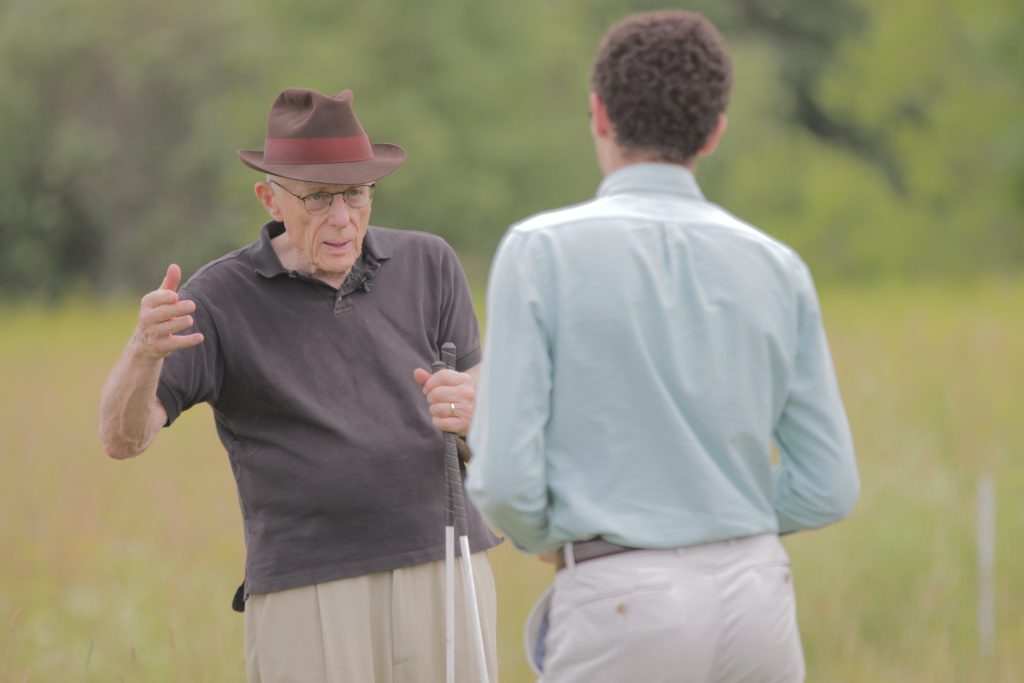
For Lewis, the story started a few years ago, when two of his bulls gored each other to death. The veterinarian Lewis worked with said he didn’t know what killed them, but that two more of the bulls “didn’t look good either.” Lewis wanted to pin him down. What exactly did the veterinarian mean by “either”?
After some prodding, the vet told him that he thought the bulls had anaplasmosis. This was serious: related to Lyme, it’s a tick-spread bacterial disease that causes cattle to become anemic and feverish. Left untreated, it leads to aggression and eventually sudden death.
Lewis shipped the other two sick bulls to a lab at Cornell University for testing. Both arrived dead that night, and the livestock veterinarian there, Dr. Belinda Thompson, drew blood and confirmed that the cows had anaplasmosis. But according to Lewis, Dr. Thompson then made a strange request: “Mr. Lewis, you’re known for doing things right. Can I come see you?”
Lewis invited her to come to the farm to help him deal with the problem. Once they met in person, Lewis says, she told him that the right way to deal with the issue was to test all his cows, isolate the sick, and treat them through subcutaneous injections of small amounts of the antibiotic tetracycline, with testing and injections repeated until they had recovered. Lewis followed through, and treated his herd as Dr. Thompson had suggested; the cows made a full recovery. He also made a note to himself to investigate further: what was standard practice for treating anaplasmosis, and why was Dr. Thompson’s prescription different?
As Lewis understood Dr. Thompson’s advice, taking antibiotics orally would disrupt the cow’s gut bacteria; subcutaneous injections were superior because they bypassed the gut biome. Dr. Thompson spoke at a symposium Lewis funded at Bard College in 2019, where she said that she does not “have enough information to know” whether she agrees that there is an effective difference in health impact between oral and subcutaneous antibiotics.
While declining to answer specific questions about her treatment program and subsequent comments, Dr. Thompson told Palladium that she stands by “all the comments I made at the Bard College Symposium” and that her treatment program was “correct and effective in eradicating the infection in the herd.” Lewis, who did not attend the Bard symposium he sponsored, said Dr. Thompson told him that putting antibiotics in the water or feed would affect the microbiome and immune system of the animals.
For most farmers, the story would end there. But for Lewis, it was the beginning of an obsession with the role of antibiotics in animal agriculture.
Lewis is no ordinary farmer, and it is his nature to investigate things with skepticism. As a scion of Wall Street royalty—his father, the legendary Salim “Cy” Lewis, ran Bear Stearns for three decades—he was rowdy and troubled, spending much of his youth in a mental institution in Chicago. He is still difficult, brash, and confrontational; but these skills would turn out to be advantageous in the path he chose.

After dropping out of the University of Chicago, he made his own way on Wall Street, where he earned a massive fortune as an arbitrageur and investment banker in the 1980s. Lewis engineered several prominent mergers, one of them immortalized in a book called The Year They Sold Wall Street, and developed a reputation as a combative critic of Wall Street wrongdoing. But a prosecution by Rudy Giuliani in the late ‘80s spelled the end of his finance career, though he would later receive a presidential pardon from Bill Clinton and was found to have acted “out of pure reforming impulse” by a federal judge.
As a result of this colorful past, Lewis—for whom farming is half retirement vocation, half ideological statement—is immune from the financial pressures that are so powerful on most family farms. He is free to farm as he sees fit. Accordingly, he raises his cattle in the healthiest way he can: his herd lives outdoors year-round on organic pastures. Lewis does not use chemical fertilizers and does not compact his soil. His cows consume no grain feed, and he avoids oral antibiotic treatment at all costs.
And he is also free to draw the lines connecting his own experience with the broader changes in human health over the last decades.
After the visit from Dr. Thompson, Lewis was intrigued: he had a hunch that the veterinarians were not telling the whole story about the use of antibiotics in farming. So Lewis applied the information gathering techniques he had honed in his Wall Street days.
After calling multiple experts for corroboration of the reasons for Dr. Thompson’s treatment protocol, he put out job postings for a farm manager everywhere he could. He used it as a pretense to hold candid interviews with farmers across the country. He asked them a series of ordinary questions to get them comfortable, and then hit them with what he really wanted to know: “We have anaplasmosis in our herd. How would you treat that?” He says they all told him that many herds had anaplasmosis, and the usual treatment was to dispense tetracycline—“the stuff from China”—in the cows’ water troughs.
But this raised a disturbing question: why did industry practice contradict what Dr. Thompson, backed up by other experts, had told Lewis was the right way to treat anaplasmosis? And why were so many farmers using antibiotics to excess, potentially endangering the health of their cattle and the humans who would ultimately eat them?

Lewis has come to believe—in line with an emergent scientific consensus—that the mass use of oral antibiotics in animal agriculture is a key factor in the mysterious and malign human health trends of the twenty-first century. Destroy the smallest living things with antibiotics—everything from gut bacteria to the microbes in the dirt and water that many insects eat—and you throw everything else out of balance, too.
Micro Origins, Macro Problems
Strange things have been happening to the human body over the last few decades. Our biology has changed, without us quite knowing how or why. Why have human body temperatures declined in the United States over the last 150 years? Or why has the age of first puberty been declining among teenagers since the mid-nineteenth century, from 16.5 years in 1840 to 13 years in 1995?
Or—to take a more troubling and immediate case—why have rates of autism been increasing so dramatically? After having been very rare a few decades prior, the rate has grown from about 1 in 150 children in 2000 to 1 in 44 in 2018, according to the Center for Disease Control. The standard explanation for this increase—changing diagnostic criteria and increased awareness—simply does not explain how sustained the uptick has been, nor does it explain the first-hand accounts of the increase by teachers. In fact, studies have found that changing diagnostic criteria account for only one-fourth of observed increases. Something else is causing the rest.
Or consider something as seemingly straightforward as obesity. In 1975, about 12 percent of American adults were obese; now that figure sits above 40 percent. The standard explanation of the remarkable increase in obesity over the last few decades—the “big two,” more calories and less physical exertion—have an intuitive appeal, but they do not seem to capture the full picture. Between 1999 and 2017, per capita caloric intake among Americans did not change, while the rate of obesity increased by about a third. The increase is so dramatic that a drop-off in physical exertion in so brief a period is unlikely to be the sole explanation, especially since the majority of human energy expenditure is non-behavioral.
Obesity thus remains, in the words of an article in the American Journal of Clinical Nutrition, an “unexplained epidemic.” This is why many scientists have sought to locate contributing factors to the secular increase in obesity, from the decline in cigarette use to increases in atmospheric CO2 levels.
There are many conditions like this: allergies, irritable bowel syndrome, eczema, and autoimmune conditions like juvenile arthritis are other notable examples. These are not the well-known “diseases of modernity,” like heart disease or Type 2 diabetes, whose causes are reasonably well-known. Disturbingly, there seem to be connections between all of these conditions: the “autistic enterocolitis” gut disorder that resembles Crohn’s disease in autistic children, the obesity-asthma link, the irritable bowel syndrome-eczema link, the eczema-allergies link. These “diseases of postmodernity” appear to be a package deal: autistic children report higher rates of stomach pain, and obese people are more likely to develop eczema-like skin diseases. There is some common root underlying these conditions.
A wealth of scientific work mostly done in the last decade by scientists like Martin Blaser of Rutgers may point to the answer. The origin lies in the extraordinary pressure we have been placing on a part of the body about which we know and think little: the microbiome of the human gut. It is an ecosystem of microbes like bacteria, archaea, and microeukaryotes that is central to a wide variety of biological functions—from regulating metabolism and sex-hormone levels to combating pathogens. There is plenty of research still being done about forms of “crosstalk” between the gut microbiome and various organs like the “gut-lung axis” or the “gut-brain axis,” which seems to play a major role in mental health.
The microbiome is invisible to us. Though it plays a role in practically every biological function, it does not have the obvious physical importance of the lungs or the heart. Yet it functions like an organ all its own. It was only a few decades ago that we began to understand just how evolutionarily integrated we, as organisms, are with the microbes that live with us. It is no longer obvious where “we” end and “they” begin; just as we have begun to adopt an ecological view of our relationship with nature, we have begun to understand our bodies as part of a “superorganism,” an ecosystem all its own, with the microbiome playing the role of a “second genome” with 150 times as many unique genes as our own genome.
The sheer size and diversity of this microscopic world is hard to fathom. There are certainly dominant species in various regions of the body: in the mouth we have Streptococcus, in the gut Bacteroides and Firmicutes; on the skin we have Propionibacterium, Corynebacterium, and Staphylococcus. But there is little unity in these microbial “kingdoms.” They are closer to patchworks of small principalities, where a few days of walking lands you somewhere with a different language. The microbes that live at the duodenum, the start of the small intestine, are very different from those of the rectum; on average, left and right hands on the same individual share just 17 percent of phylotypes.
Crucially, a wide variety of conditions including the “postmodern” ones like autism, autoimmune disorders, and obesity—Blaser originated the “postmodern” framing in his 2014 book Missing Microbes—are accompanied by changes in the microbiome. Study after study has found that obese people tend to have severe dysbiosis in their gut microbiomes, with a significant reduction in the prevalence of Bacteroidetes and a proportional increase in the abundance of Firmicutes, another bacteria. Legions of studies have found similar relationships for autism, autoimmune diabetes and other autoimmune conditions like irritable bowel syndrome, for asthma, for allergies, and for all the other conditions that constitute the postmodern disease package.
Much of this has only become known in the last few decades, with microbiome work only becoming fashionable in the 2010s. In fact, it is just as we have discovered the importance of the microbial world that we have realized how much damage we have done to it. Bacteria that we once vilified for their associations with disease, like the gut-dweller Helicobacter pylori—“the only good Helicobacter pylori is a dead Helicobacter pylori,” one scientist wrote in The Lancet in 1997—have been discovered as important in their own right: H. pylori is beneficial for preventing reflux and esophageal cancers.
But it was too late. As Blaser would write in a 1999 dirge for the bacterium, this discovery was made only after H. pylori had virtually disappeared from the microbiomes of children in the developed West. And because these microbiota are passed from generation to generation, whether through birth or breast milk, they are likely to become rarer with time.
A microbial history of the twentieth century would reveal a campaign of microscopic devastation. In effect, we have been at war with our gut flora to make it conform to our demands, and we now find ourselves in a societal microbiome crisis, with each generation more affected than the last by a process of cumulative microbial depletion. And our main weapon in this war has been the antibiotic.
Animals in the Antibiotic Age
Antibiotics like penicillin, tetracycline, doxycycline, ciprofloxacin, and colistin are the central miracles of modern medicine. They are highly effective in destroying pathogens that otherwise would pose severe risks to human health. Next to mass vaccines and antiviral drugs, they are perhaps the single most important health intervention of the twentieth century.
But antibiotics accomplish their assaults on the targeted microbes by acting as a defoliant for the gut flora. The drugs inhibit the growth of some species of bacteria and encourage the growth of others, often altering the balance of the microbial ecosystem in perverse ways. This is why antibiotic regimens, especially long ones, have been shown to cause huge imbalances in the microbiome.
The link between antibiotics and a condition like obesity is not far behind: we have known for a long time that antibiotics induce rapid weight gain in everything from mice to humans. The specific dynamic—antibiotics cause gut dysbiosis, and gut dysbiosis leads to obesity and other diseases—is now becoming increasingly clear. Similar studies for conditions like asthma or juvenile arthritis, all conducted only in the last few years, have found the same link.
This is especially worrying because antibiotics are everywhere. The modern age is the antibiotic age; since Alexander Fleming’s discovery of penicillin was put to mass use in World War II, we have lived amid a free-for-all of antibiotic consumption. Fleming himself warned of an “era…of abuses” that would reverse all the progress he and other scientists had made by fostering highly resistant “superbugs.” Recent decades have seen programs of “antimicrobial stewardship” in the rich world that aim to reduce antibiotic usage, in order to reduce the risk of antimicrobial resistance.
But for those concerned with the harms of antibiotic overuse—whether due to antimicrobial resistance or microbiome dysbiosis—there is a big problem. Most of our interactions with antibiotics do not come through medical prescriptions for drugs like penicillin or doxycycline: instead, they come from what we eat and drink. And because antibiotics have become so ubiquitous, inadvertent antibiotic consumption has become a major neglected crisis.
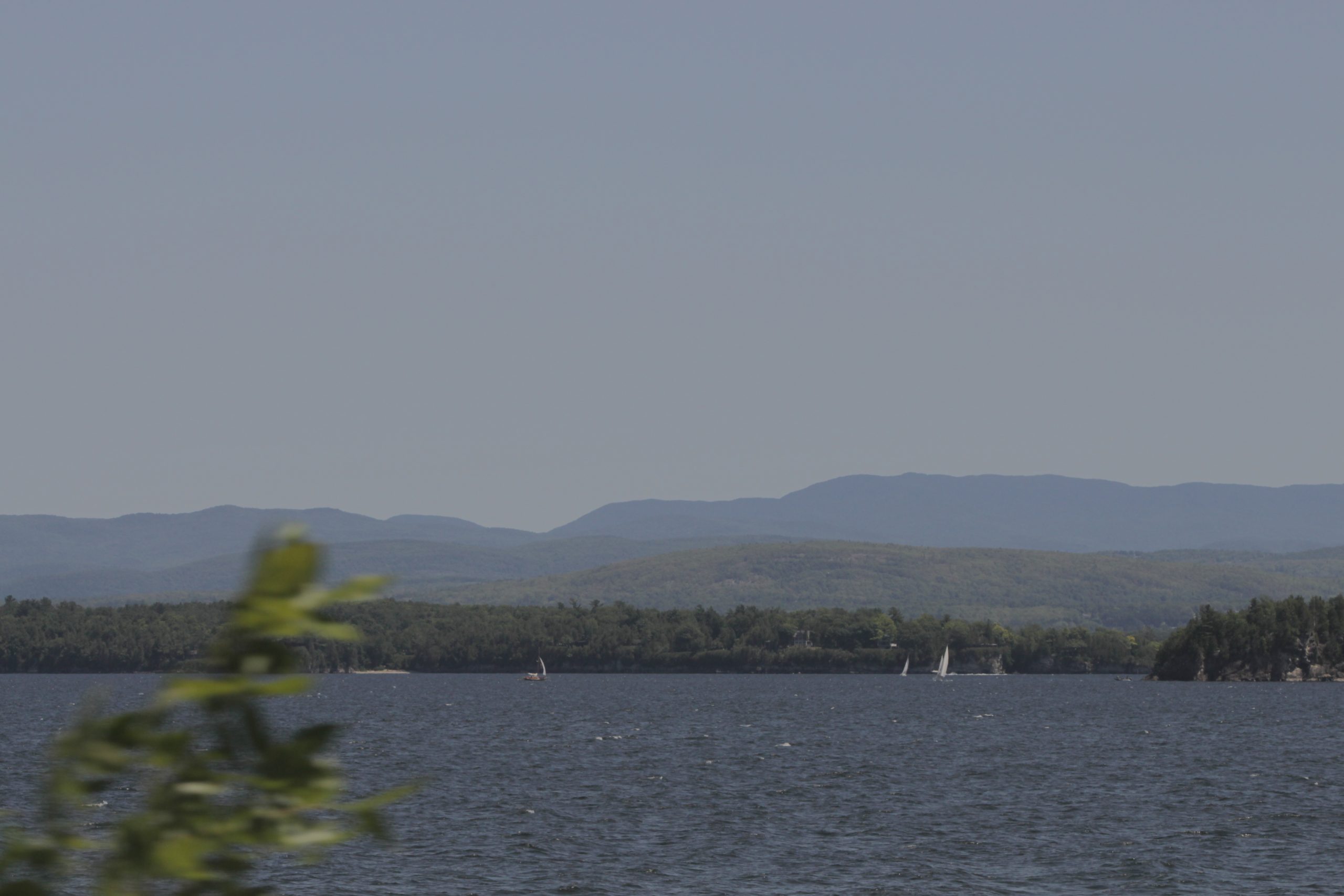
Consider animal agriculture, the main force for antibiotic pollution in the United States. Antibiotics are now crucial to the industrial production of chicken, pig, and cow protein; in recent years antibiotics have even begun to be used in aquaculture. The reasons are simple: antibiotics used prophylactically can prevent and suppress infectious diseases, like bovine footrot and anaplasmosis, that are common in the claustrophobic quarters of concentrated animal-feeding operations (CAFOs). More insidiously, antibiotics can make livestock larger by disrupting their gut biomes and metabolisms, allowing them to be slaughtered at younger ages and at greater weights. In 2019, of the antibiotics sold in the United States, only about a third went to humans, with the rest consumed by livestock.
Antibiotics have been used in American animal agriculture since the late 1940s. It was then that Thomas Jukes, a biologist for the pharmaceutical company Lederle Laboratories, discovered that treating chickens with even trace amounts of the antibiotic chlortetracycline—a drug that had been discovered in 1945 at Lederle—caused them to gain much more weight. The more chlortetracycline the birds got, the larger they were; the chickens that had gotten the highest doses weighed two and a half times more than the ones that hadn’t gotten anything.
The discovery set off a revolution in how animals were raised. The New York Times announced that the drug “has been found to be one of the greatest growth-promoting substances so far to be discovered;” antibiotics in animal feed soon became a major research focus at nearly every drug company. “Here is good news for both farmers and meat eaters,” Fortune magazine announced in 1952: “antibiotics provide more meat with less feed.” By 1955, farmers were already treating their animals with 490,000 pounds of antibiotics a year.
The antibiotic revolution in agriculture—along with more innovations like Vitamin D supplementation that made windowless CAFOs feasible, logistical optimization to make slaughter faster and cheaper, and the selective breeding of more “meat-type” chickens through events like the “Chicken of Tomorrow” contests of 1948 and 1951—powered the remarkable cheapening of chicken, with one poultry producer dubbing it “meat for the price of bread.” Soon, chickens were much larger and slaughtered at much younger ages.
But the economic results of this biological experiment were unmistakable. Per capita consumption of chicken—once a rare and expensive kind of meat, typically consumed as a Sunday treat—more than tripled between 1960 and 2020, growing from a relatively marginal part of the American diet in the first few decades of the twentieth century into the country’s premier staple protein.
All of this put other animal protein products—particularly beef and pork—on the defensive. By the mid-1970s, per capita beef consumption entered a long decline, while pork consumption plateaued. By 1992, Americans ate more chicken per capita than they did beef for the first time.
This meant that beef production, too, would have to be made more efficient and cost-effective—“chickenized,” in the parlance of some farmers. But cows were a much more challenging terrain for this type of Fordist intensification than chickens. Small, docile, fast-maturing, and slaughtered without much fuss, chickens are the perfect cogs for a highly optimized food production system.
Cows and other ungulates, by contrast, are ruminants that need much larger amounts of food and land, develop more slowly, and require greater amounts of individual care; their size means they cannot be as concentrated in CAFOs as chickens are. In relation to the central ratio of meat produced per hour and dollar spent, it is clear which creature comes out ahead.
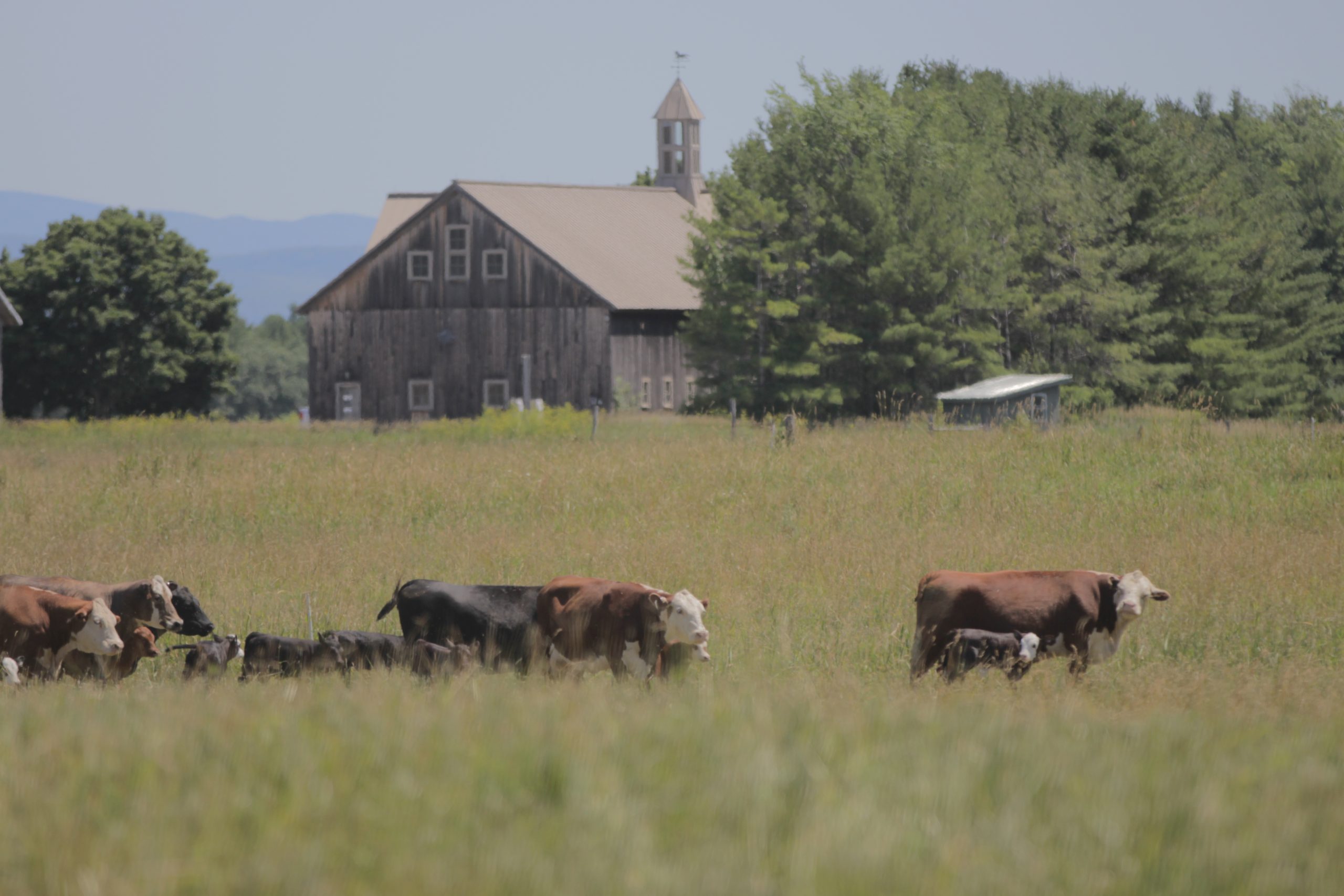
But cow producers would have to chickenize what they could to stop from losing more ground. This meant more concentrated diets built on corn-based feed, made cheap by massive corn surpluses from the 1970s on, as well as more concentrated feedlots. But these diets caused liver abscesses, bloat, and acidosis, while crowding provided ideal conditions for infectious diseases like bovine footrot. And cows were still much less cost-effective than chickens. This meant that antibiotics were necessary, both for disease suppression and growth promotion.
In 1975, the antibiotic monensin was licensed; within ten years, it and other ionophore antibiotics were being fed to more than 90 percent of American feedlot cattle, alongside other antibiotics like tetracycline and penicillin. It was a decades-long spree of antibiotic abuse. “Motorway veterinarians” could make huge sums of money prescribing antibiotics for animals they had never seen; many entrepreneurs simply sold drugs without prescriptions. A congressional investigation in 1985 found that “as many as 90 percent or more of the 20,000 to 30,000 new animal drugs estimated to be on the market” had not been approved by the Food and Drug Administration (FDA).
As with chickens, the biological effects on cows were significant. The year that monensin was licensed, the average weight of cows at slaughter was 1,047 pounds; by 2005, it had grown thirty percent, to 1,369 pounds. By 2017, American cattle producers used about 171 milligrams of antibiotic per kilogram of livestock—four times as much as in France, and six times as much as in the United Kingdom.
This has a significant effect on all types of animal products, and potentially on any watershed downstream of the trough water. Antibiotic residue in both drinking water and animal products like milk, meat, and eggs remains a significant problem with little work done to address it. While individual meals may have only sub-inhibitory concentrations, the power of bioaccumulation over decades of significant consumption cannot be discounted. There is still little data collected on the risks of long-term bioaccumulation of antimicrobials for human health.
The Price of Something Better
As a result of this mass pharmaceutical use in animal agriculture, natural bodies of water now contain remarkable amounts of antibiotic waste. One study of a river in Colorado found that “the only site at which no antibiotics were detected was the pristine site in the mountains before the river had encountered urban or agricultural landscapes.” Antibiotics like macrolides and tetracyclines have been found in chlorinated drinking water, while the antibiotic triclosan has been found in rivers and streams around the world. This effluent trickles into everything else: research has detected uptake of veterinary antibiotics in carrots and lettuce, as well as in human breast milk.
The effects of this antibiotic pollution in the natural world appear to be profound. The leakage of antibiotics into natural environments alters animal biology in grotesque ways: sub-medical concentrations of antibiotics have been shown to cause severe physical deformations in zebrafish, like yolk sac edema, as well as in amphibians like the Western clawed frog. Because the drugs have an effect on gene expression, the deformations extend into development and behavior as well: a study of the small crustacean Daphnia magna found that tetracycline impacted the general stress response and metabolism.
Most worryingly, the effect was multigenerational, extending from parent to child—and carried over even after tetracycline was removed from the ecosystem. It is not surprising that the introduction of antibiotics into an aquatic environment leads to reduced fertility and increased mortality. Lewis believes that antibiotics are responsible for the insect die-offs seen in industrialized countries: the antibiotic rifampin resulted in “prolonged reductions in longevity and fecundity” among two termite species, with similar effects shown with bumblebees’ exposure to antibiotics. He points to the richness of insect life on his farm as a useful contrast.
This is the essential crisis that Lewis and others are diagnosing. The effects of antibiotics on the microbiomes of living organisms are profound and highly detrimental; the full scope of their impacts on human health—from autoimmune disease to early puberty to antisocial behavior—are not yet clear, let alone those of their impacts on the non-human environment. Antibiotics are present almost everywhere as environmental pollutants; and because microbial strains are passed from generation to generation with significant potential for gradual attrition, without serious intervention the crisis will only worsen with time.
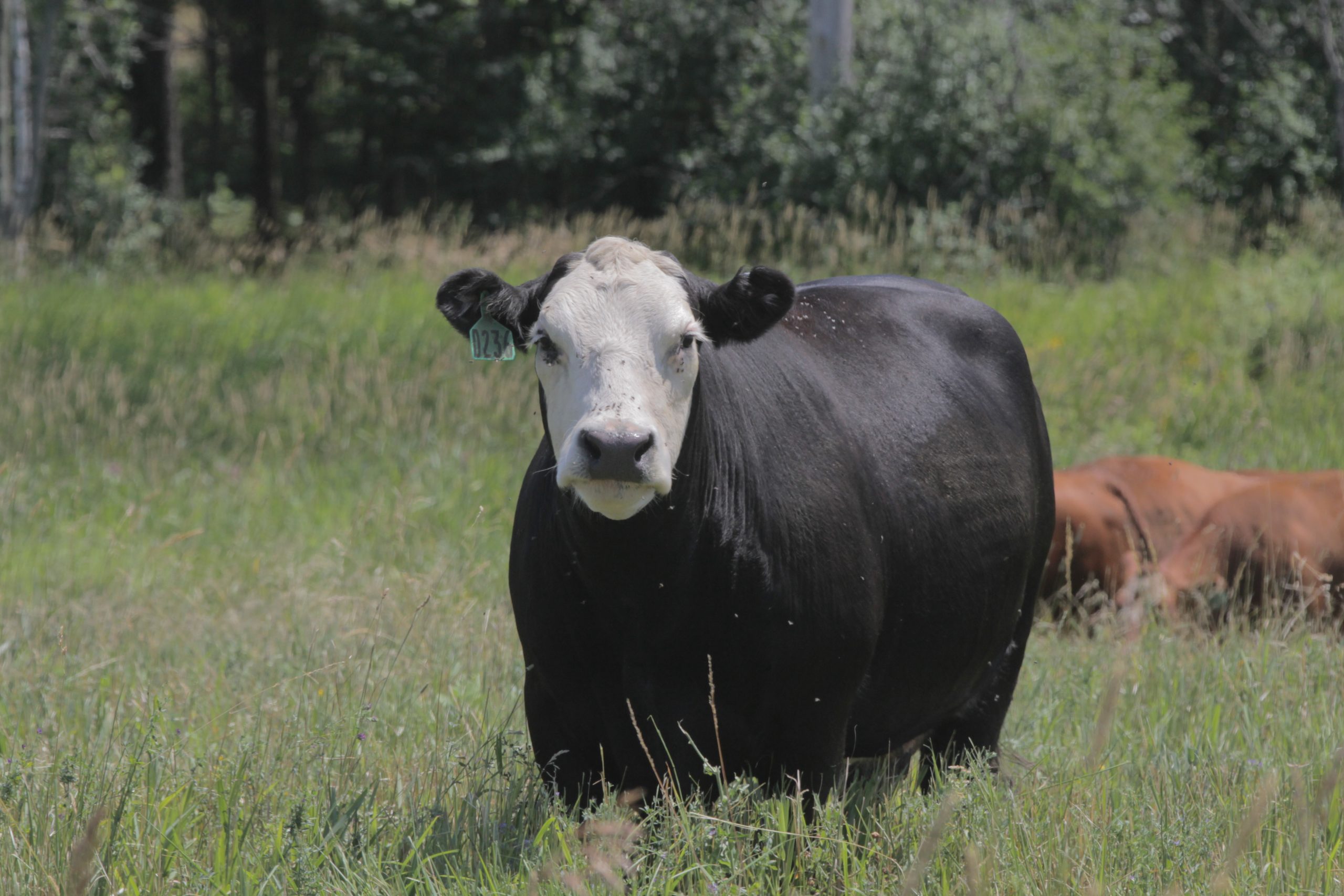
It may well be, of course, that other environmental toxins are also contributing to the increase in postmodern disorders. Studies have highlighted a potential link between autism-like behavior and the herbicide glyphosate; there have also been some findings, generally more limited, about the link between toxicants and autism, and a recent focus on the role of toxic “obesogens” in the obesity epidemic. But no single element has demonstrated as clear a pathway for a wide variety of conditions as antibiotics.
And yet in spite of a loudening scientific drumbeat, there has been little action on the microbiome problem in the United States. There is work around marketing probiotic products and microbiome transfer therapies—usually in the form of bacteria-fortified drinks or fecal transplants—but little in the way of significantly reducing antibiotic pollution in the first place. European Union regulators have been far more proactive in reducing antibiotic pollution since the 1970s, though with antibiotic resistance in mind rather than microbiome dysbiosis. Though establishing causality is always tricky, it is a good sign that France, for instance, reports notably low rates of autism, low rates of irritable bowel syndrome, and low rates of obesity.
For decades, the FDA had attempted to follow the European example. From the 1970s into the 2000s they sought to restrict penicillins and tetracyclines as growth promoters, but were repeatedly stymied by pharmaceutical lobbyists. It was not until 2017, well after European countries had strictly limited the use of antibiotics, that the FDA was finally able to ban the use of antibiotics for growth promotion in livestock, mandating that all antibiotics given to cattle needed a prescription. After peaking in 2015, antibiotic use on farms has declined by about 40 percent, with most of the effect taking place in the year of the ban.
But antibiotic use remains elevated, above an average of 100 milligrams per kilogram per year—far more than the 50 milligram limit that reports on antibiotic resistance have proposed, and several times more than is normal in European countries like France or Norway. The reason, Lewis believes, goes back to his anaplasmosis episode. He believes that anaplasmosis is commonly used as a pretext for administering growth-promoting antibiotics, and that this is an open secret among farmers and livestock veterinarians. The “motorway veterinarian,” dependent on the business of growth-hungry farmers, remains alive and well.
It is difficult to establish the precise intent surrounding current antibiotic use—what exactly farmers want when they put tetracycline in the water. But antibiotics ostensibly used as prophylactics against disease are effectively the same as antibiotics used for growth promotion: rebranded as a convenient side effect, antibiotic growth promotion survives in all but name.
Thus even the FDA’s ban on antibiotic growth promotion remains full of holes. Verification is another issue: it is not so difficult for beef farmers to acquire antibiotics underground and feed them to their cattle without reporting it. Much of the system essentially relies on an honor code, and the Department of Agriculture—a notorious case study in regulatory capture—is hesitant to cause too much trouble. One study in Science found that 42 percent of lots that were certified by the Department of Agriculture as “Raised Without Antibiotics” actually contained cattle that had been given antibiotics, with five percent of lots being composed entirely of cattle raised on antibiotics.
As we toured the Lewis Family Farm, we discussed the best ways to address the problem. Perhaps an organization could test feedlots to determine which farms are trustworthy in their antibiotic claims, and which are not. Mass testing of rivers and streams for antibiotic runoff might be useful. There is still much work to be done on seeing how far microbiome transfer therapies could go in ameliorating the postmodern disease package—results indicating that they could help children with autism are encouraging, and experiments are now expanding to conditions like ulcerative colitis. New institutions could arise in response to new challenges of health: microbial restoration will have to be a societal project, not an individual one.
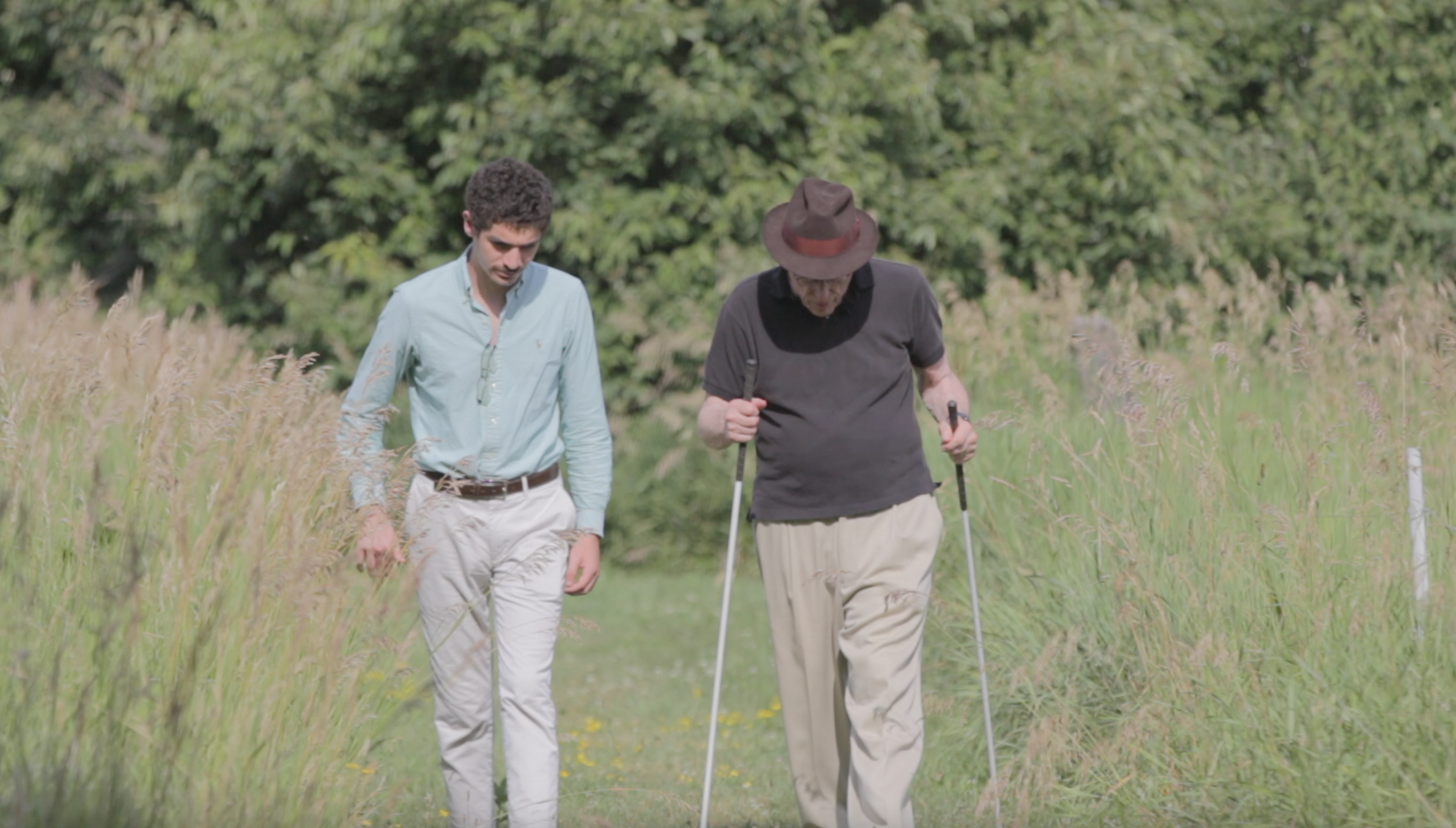
But keeping in character, Lewis proposes something more ambitious: a 6.5 million acre reserve—roughly the size of Sicily—in upstate New York, hosting both a consortium of elite universities (Cornell, Dartmouth, and others) and a massive organic farm. The land would be cycled between grazing for sheep and cows, and the students would be enlisted in agricultural production. It would represent the promise of an agricultural order fully integrated with the social one, with human health not just a casualty of ever-cheaper meat.
The project, he estimated, would cost somewhere in the tens of billions of dollars just to buy the land. We were skeptical that this could produce the economies of scale to compete with industrial, antibiotic-dosed meat; it seemed tinged with a rustic utopianism out of William Morris.
But Lewis was serious. On the day we were due to return to New York, as we nibbled on coffeecake that his wife Barbara had prepared in their wooden farmhouse kitchen, Lewis called up one of the very wealthiest men in the world—someone whose fortune dwarfed his own—and started pitching him on the importance of this issue.
As he cajoled the billionaire on the phone, we looked outside at the sweeping Adirondacks; the whole place, from the farmhouse to the air itself, felt healthy and pleasant. Whether or not his way could ultimately triumph over the feedlots and trough-water antibiotics, Lewis had cultivated something charismatic in his crusade for human-aligned agriculture.
He was still on the phone, teeing up his pitch. The billionaire, clearly riding in the back of a limousine, said he was busy. But Lewis was insistent. We didn’t have much time, he said. It was urgent: it was a matter of human health.
